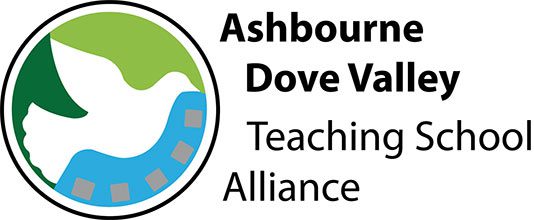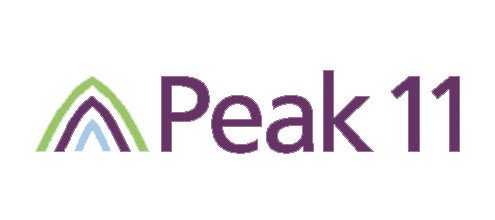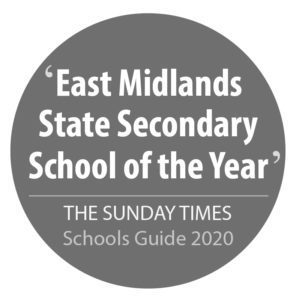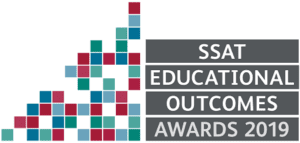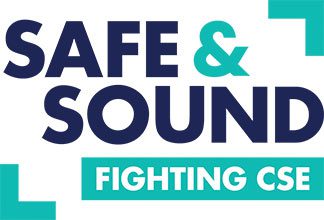New Reporting System: Aligning with our QEGS classroom and values
As part of our continued commitment to fostering a positive and purposeful learning culture, we are introducing a new reporting system that more meaningfully reflects the attitudes and behaviours we expect from our students. This refined approach is built around the QEGS Classroom.
We believe that academic progress is not just about outcomes but about how students approach their learning. The new reporting structure allows all staff to give clear, consistent feedback on student attitudes to learning that are rooted in the values we promote every day across the school through our QEGS Classroom.
What’s Changing?
• The previous 3Rs model will no longer be used. While it served its purpose, it no longer fully reflects the direction of our school ethos or the depth of learner behaviours we now wish to recognise and support.
• In its place, all staff will now report on Attitudes to Learning using a 1–4 scale, based on observable behaviours in each subject. This approach places greater emphasis on how students are engaging with their learning rather than simply what they produce. Again, this directly links to the QEGS classroom so all stakeholders are knowledgeable about our QEGS classroom expectations.
The New 1–4 Scale
Each student will receive a grade from 1 to 4 in each subject, with clear descriptors aligned to the QEGS values (all you simply need to do is select one to 1-4 for each student in your class).
For information on The QEGS Classroom click here.
Level 1 – Exemplary Learner
The exemplary Learner demonstrates an exceptional commitment to learning, consistently showing eagerness to participate in class and engage deeply with subject material. They actively seek feedback and use it effectively to improve. Their behaviour is outstanding, and they live out the school’s values at all times, earning regular QEGS points and frequent positive on calls. They have an excellent grasp of how spiritual, moral, social, and cultural (SMSC) elements connect to their subject learning.
This learner always arrives punctually, lines up in absolute silence outside the classroom, fully prepared with all the correct equipment, and waits respectfully to be met and greeted by the teacher. They begin each lesson by completing Do Now activities in silence with enthusiasm and approach every task with focus and determination. Their work is presented to a very high standard, showing real pride and care in their books. They use pen, pencil, and ruler with accuracy and purpose, ensuring all diagrams, graphs, and written responses are clear, precise, and well-structured. Books are always neat, fully completed, and consistently reflect their excellent effort and organisation.
They consistently achieve learning outcomes and understand how their progress fits into the wider curriculum. These learners are confident communicators, using advanced vocabulary, strong oracy skills, and a clear understanding of numeracy when relevant. They also show strong leadership by supporting peers effectively.
The Exemplary Learner:
• Exceptionally committed to learning and eager to participate
• Seeks and uses feedback effectively to improve
• Always demonstrates outstanding behaviour
• Consistently lives out the school’s values
• Regularly earns QEGS points and receives positive On Calls
• Understands spiritual, moral, social, and cultural links in the lesson
• Always punctual and lines up silently outside the classroom
• Fully prepared with all correct equipment
• Begins lessons by completing Do Now tasks in silence and with enthusiasm
• Approaches all tasks with focus and determination
• Presents work to a very high standard with pride and care
• Uses pen, pencil, and ruler accurately for neat, clear work
• Books are neat, complete, and show excellent organisation
• Achieves learning outcomes and understands their place in the wider curriculum
• Confident communicator with strong subject specific vocabulary and oracy skills
• Applies numeracy well in the subject when needed
• Shows leadership and supports peers effectively
Level 2 – Secure Learner
The Secure Learner is a consistent and reliable participant in their education. They show a clear desire to learn, regularly contributing to class discussions and responding well to teacher feedback. Their behaviour reflects the school’s values, and they are recognised frequently with QEGS points. They have a good understanding of SMSC connections and how these relate to the subject.
This learner usually arrives on time, lines up quietly outside the classroom, and is prepared with the correct equipment, waiting respectfully to be welcomed in by the teacher. They complete Do Now tasks with focus and determination and are ready to learn. Their book work is neatly presented and clearly structured, with titles and dates in place and tasks completed to a good standard. They use pen, pencil, and ruler appropriately and with care, demonstrating pride in their work and a desire to maintain presentation standards in every lesson.
They meet lesson outcomes regularly and show a developing awareness of curriculum structure. They take initiative in asking for help and are often seen supporting their peers. Their oracy and vocabulary are strong, and they can explain numeracy concepts confidently when they appear in lessons.
The Secure Learner:
• Consistent and reliable in their learning
• Eager to learn and joins in class discussions
• Responds well to teacher feedback
• Behaviour reflects school values
• Frequently earns QEGS points – met full expectations
• Understands SMSC links in their subject
• Usually punctual and lines up quietly
• Comes prepared with correct equipment
• Completes Do Now tasks with focus
• Neat and clearly structured book work
• Uses pen, pencil, and ruler correctly
• Takes pride in maintaining presentation
• Meets lesson outcomes regularly
• Understands how learning fits in the curriculum
• Asks for help when needed and supports others
• Speaks clearly using good subject specific vocabulary
• Explains numeracy ideas confidently in the lesson
Level 3 – Developing Learner
The Developing Learner is starting to engage more consistently with learning. They contribute occasionally in class and show growing interest in developing their knowledge. While they may need support to fully act on feedback, they are showing progress. Their behaviour is usually positive, and they are beginning to reflect school values more consistently. They are developing awareness of SMSC within the subject and occasionally receive QEGS points and positive recognition.
This learner sometimes lines up correctly outside the classroom, though may need reminders to remain quiet and focused while waiting for the teacher to meet and greet them. They are often partially prepared, sometimes lacking key pieces of equipment. They begin lessons with some focus and attempt Do Now activities with varying success. Their books show signs of improvement, with effort beginning to be shown in presentation. They are learning to use pen, pencil, and ruler where appropriate, though they may still need prompts to do so consistently. Work is sometimes incomplete or disorganised, but there are emerging signs of pride and responsibility.
They are capable of meeting learning outcomes but may not always connect these to the broader curriculum. They are learning to ask for help when needed and sometimes support their peers. Their oracy is developing, and they can use subject-specific vocabulary and apply basic numeracy skills with guidance.
The Developing Learner:
• Starting to engage more consistently with learning
• Sometimes contributes in class discussions
• Showing growing interest in learning
• Needs support to fully use feedback
• Behaviour is usually positive
• Beginning to reflect school values
• Has some awareness of SMSC links
• Occasionally earns QEGS points – Mostly me expectations
• Sometimes lines up correctly, may need reminders
• Often partially prepared for lessons
• Begins lessons with some focus
• Attempts Do Now tasks with mixed success
• Book work is improving in effort and presentation
• Learning to use pen, pencil, and ruler properly
• Work may be incomplete or disorganised
• Showing early signs of pride and responsibility
• Can meet learning outcomes with support
• Learning to connect work to the bigger picture
• Sometimes asks for help and supports others
• Developing speaking skills and subject specific vocabulary
• Can use basic numeracy in the lesson with guidance
Level 4 – Emerging Learner
The Emerging Learner is in the early stages of developing positive learning behaviours. They show limited interest in class discussions and often need encouragement to engage. They struggle to use feedback independently and rarely demonstrate behaviour that aligns with the school’s values. Their understanding of SMSC links is minimal and they seldom receive QEGS points or positive on calls.
This learner often arrives late or fails to line up properly outside the classroom, showing little regard for the expectation to wait in silence and be greeted by the teacher. They are frequently unprepared, lacking the correct equipment needed for learning. As lessons begin, they may not complete Do Now activities effectively or with focus. Their books show minimal attention to presentation, with frequent incomplete or untidy work, and little evidence of pride or organisation. They rarely use pen, pencil, or ruler appropriately unless directed, and often require significant support to meet basic expectations for written work.
Learning outcomes are rarely met, and they show limited understanding of how their learning connects to the curriculum. They are hesitant to seek help and do not yet show confidence in supporting others. Their verbal contributions are minimal, and they require support to develop vocabulary and basic numeracy understanding in lessons.
The Emerging Learner:
• In early stages of developing learning habits
• Shows limited interest in class discussions
• Needs encouragement to engage
• Struggles to use feedback independently
• Rarely shows behaviour aligned with school values
• Minimal understanding of SMSC links
• Rarely receives QEGS points or praise
• Often arrives late or doesn’t line up correctly
• Frequently unprepared and missing equipment
• Does not complete Do Now tasks effectively
• Book work is often untidy or incomplete
• Shows little pride or organisation in work
• Rarely uses pen, pencil, or ruler correctly
• Needs lots of support to meet basic standards
• Rarely meets lesson outcomes
• Limited understanding of curriculum connections
• Hesitant to ask for help
• Not yet confident in supporting others
• Limited subject specific vocabulary
• Needs help to use basic numeracy in lesson.
Why This Matters
This new system simplifies the reporting process while making it more purposeful. It supports more targeted conversations between staff, students, and families, and it directly reinforces the kind of learning behaviours we wish to see in every classroom. In short, this shift is not just about changing terminology. It is about embedding the way we recognise, challenge, and support our learners, ensuring that our reporting is not just reactive, but proactive and aligned with the QEGS Classroom.
Drop down targets for students regarding the QEGS Classroom in Go4Schools
Student Targets – Question, Explore, Give, Succeed
The QEGS Classroom Target
| Section | Teacher Target |
| Question 1 | Answer questions confidently and show a strong enthusiasm for learning new concepts. |
| Question 2 | Act on feedback to improve the quality of work and deepen understanding across topics. |
| Question 3 | Show self-awareness by identifying strengths and areas for growth and seek help when needed to maximise progress. |
| Question 4 | Present work to a consistently high standard using neat handwriting, accurate layout, and correct use of pen, pencil, and ruler. |
| Explore 1 | Demonstrate outstanding behaviour and show commitment to the school’s values at all times. |
| Explore 2 | Apply knowledge of SMSC by making thoughtful connections between the subject and real-world issues. |
| Explore 3 | Achieve recognition for excellent conduct through receiving QEGS points and positive communication home. |
| Give 1 | Line up calmly and silently outside the classroom, arriving fully equipped and ready to learn. |
| Give 2 | Complete Do Now tasks independently, in silence, and with a positive attitude. |
| Give 3 | Meet lesson objectives and explain how new learning fits into the wider curriculum context. |
| Succeed 1 | Ask for support when needed to make consistent progress and overcome challenges. |
| Succeed 2 | Encourage and assist peers with empathy, showing strong teamwork and leadership skills. |
| Succeed 3 | Use subject-specific vocabulary fluently and accurately, including when explaining numeracy concepts in context. |
GO 4 Schools
At QEGS we use Go4Schools to communicate with parents and carers. At any time, you can log in to access:
- Homework – Homework tasks due in the next 7 days
- Attendance – Shown from the start of the academic year
- Timetable – Your child’s daily and weekly timetable
- Behaviour information – including QEGS Points awarded
- Real-time assessment information –for all subjects as they are updated throughout the year.
https://www.go4schools.com/parents/
Go4schools Guidance For Parents/Carers
Students can also access Go4Schools with their school username and password, and we strongly encourage this.
https://www.go4schools.com/students/
To access Go 4 Schools there is guidance on using the website and the app, including logging on for the first time.
Mobile app quick start guide
Assessment and Reporting
At QEGS, students are expected to be able to answer two questions:
- What can I do well?
- What do I need to do to improve?
Feedback happens every lesson, including:
- Do Now retrieval strategies at the start of every lesson, challenging students to review prior learning and consolidate knowledge
- Assessment for learning or a learning check happens every lesson
- Teachers use questioning to identify misconceptions and provide instantaneous feedback
Formal assessments are carried out a minimum of once per term, and these are used to update the predicted grades on Go 4 Schools. Feedback is given, identifying strengths and next steps, and students are given time to act on the improvements. Assessments can take many forms, including:
- End of unit or end of topic tests
- Exam questions
- Online assessments
- Presentation
- Performance


